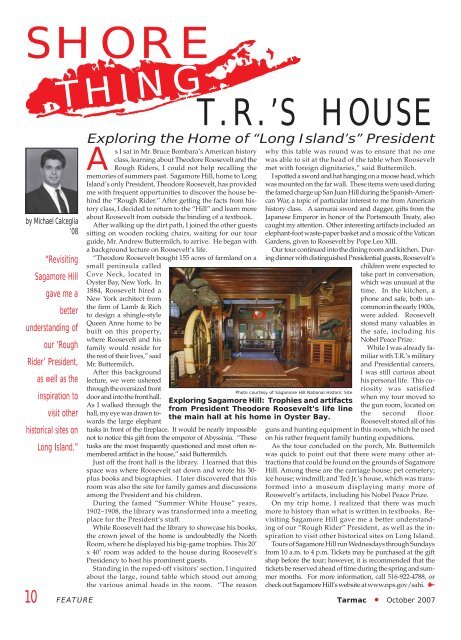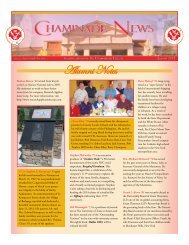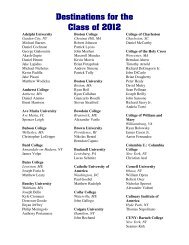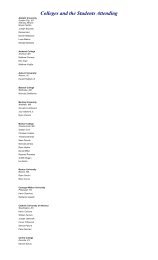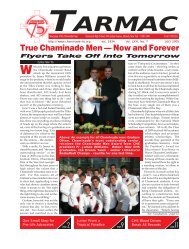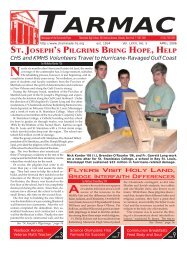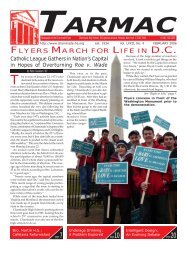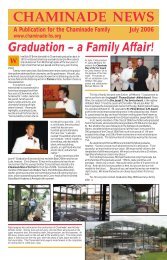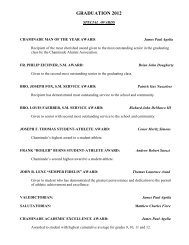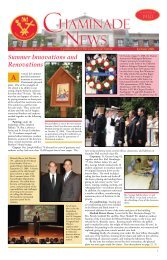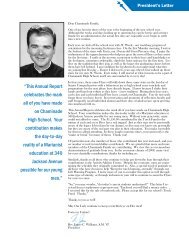Tarmac October 2007.pdf - Chaminade High School
Tarmac October 2007.pdf - Chaminade High School
Tarmac October 2007.pdf - Chaminade High School
Create successful ePaper yourself
Turn your PDF publications into a flip-book with our unique Google optimized e-Paper software.
SHORE<br />
by Michael Calceglia<br />
‘08<br />
THING T.R.’S HOUSE<br />
“Revisiting<br />
Sagamore Hill<br />
gave me a<br />
better<br />
understanding of<br />
our ‘Rough<br />
Rider’ President,<br />
as well as the<br />
inspiration to<br />
visit other<br />
historical sites on<br />
Long Island.”<br />
10 FEATURE<br />
Exploring the Home of “Long Island’s” President<br />
As I sat in Mr. Bruce Bombara’s American history<br />
class, learning about Theodore Roosevelt and the<br />
Rough Riders, I could not help recalling the<br />
memories of summers past. Sagamore Hill, home to Long<br />
Island’s only President, Theodore Roosevelt, has provided<br />
me with frequent opportunities to discover the house behind<br />
the “Rough Rider.” After getting the facts from history<br />
class, I decided to return to the “Hill” and learn more<br />
about Roosevelt from outside the binding of a textbook.<br />
After walking up the dirt path, I joined the other guests<br />
sitting on wooden rocking chairs, waiting for our tour<br />
guide, Mr. Andrew Buttermilch, to arrive. He began with<br />
a background lecture on Roosevelt’s life.<br />
“Theodore Roosevelt bought 155 acres of farmland on a<br />
small peninsula called<br />
Cove Neck, located in<br />
Oyster Bay, New York. In<br />
1884, Roosevelt hired a<br />
New York architect from<br />
the firm of Lamb & Rich<br />
to design a shingle-style<br />
Queen Anne home to be<br />
built on this property,<br />
where Roosevelt and his<br />
family would reside for<br />
the rest of their lives,” said<br />
Mr. Buttermilch.<br />
After this background<br />
lecture, we were ushered<br />
through the oversized front<br />
door and into the front hall.<br />
As I walked through the<br />
hall, my eye was drawn towards<br />
the large elephant<br />
tusks in front of the fireplace. It would be nearly impossible<br />
not to notice this gift from the emperor of Abyssinia. “These<br />
tusks are the most frequently questioned and most often remembered<br />
artifact in the house,” said Buttermilch.<br />
Just off the front hall is the library. I learned that this<br />
space was where Roosevelt sat down and wrote his 30plus<br />
books and biographies. I later discovered that this<br />
room was also the site for family games and discussions<br />
among the President and his children.<br />
During the famed “Summer White House” years,<br />
1902–1908, the library was transformed into a meeting<br />
place for the President’s staff.<br />
While Roosevelt had the library to showcase his books,<br />
the crown jewel of the home is undoubtedly the North<br />
Room, where he displayed his big-game trophies. This 20’<br />
x 40’ room was added to the house during Roosevelt’s<br />
Presidency to host his prominent guests.<br />
Standing in the roped-off visitors’ section, I inquired<br />
about the large, round table which stood out among<br />
the various animal heads in the room. “The reason<br />
why this table was round was to ensure that no one<br />
was able to sit at the head of the table when Roosevelt<br />
met with foreign dignitaries,” said Buttermilch.<br />
I spotted a sword and hat hanging on a moose head, which<br />
was mounted on the far wall. These items were used during<br />
the famed charge up San Juan Hill during the Spanish-American<br />
War, a topic of particular interest to me from American<br />
history class. A samurai sword and dagger, gifts from the<br />
Japanese Emperor in honor of the Portsmouth Treaty, also<br />
caught my attention. Other interesting artifacts included an<br />
elephant-foot waste-paper basket and a mosaic of the Vatican<br />
Gardens, given to Roosevelt by Pope Leo XIII.<br />
Our tour continued into the dining room and kitchen. During<br />
dinner with distinguished Presidential guests, Roosevelt’s<br />
children were expected to<br />
take part in conversation,<br />
which was unusual at the<br />
time. In the kitchen, a<br />
phone and safe, both uncommon<br />
in the early 1900s,<br />
were added. Roosevelt<br />
stored many valuables in<br />
the safe, including his<br />
Nobel Peace Prize.<br />
While I was already familiar<br />
with T.R.’s military<br />
and Presidential careers,<br />
I was still curious about<br />
his personal life. This cu-<br />
riosity was satisfied<br />
when my tour moved to<br />
the gun room, located on<br />
the second floor.<br />
Roosevelt stored all of his<br />
guns and hunting equipment in this room, which he used<br />
on his rather frequent family hunting expeditions.<br />
As the tour concluded on the porch, Mr. Buttermilch<br />
was quick to point out that there were many other attractions<br />
that could be found on the grounds of Sagamore<br />
Hill. Among these are the carriage house; pet cemetery;<br />
ice house; windmill; and Ted Jr.’s house, which was transformed<br />
into a museum displaying many more of<br />
Roosevelt’s artifacts, including his Nobel Peace Prize.<br />
On my trip home, I realized that there was much<br />
more to history than what is written in textbooks. Revisiting<br />
Sagamore Hill gave me a better understanding<br />
of our “Rough Rider” President, as well as the inspiration<br />
to visit other historical sites on Long Island.<br />
Tours of Sagamore Hill run Wednesdays through Sundays<br />
from 10 a.m. to 4 p.m. Tickets may be purchased at the gift<br />
shop before the tour; however, it is recommended that the<br />
tickets be reserved ahead of time during the spring and summer<br />
months. For more information, call 516-922-4788, or<br />
check out Sagamore Hill’s website at www.nps.gov/sahi.<br />
Photo courtesy of Sagamore Hill National Historic Site<br />
Exploring Sagamore Hill: Trophies and artifacts<br />
from President Theodore Roosevelt’s life line<br />
the main hall at his home in Oyster Bay.<br />
<strong>Tarmac</strong> • <strong>October</strong> 2007


